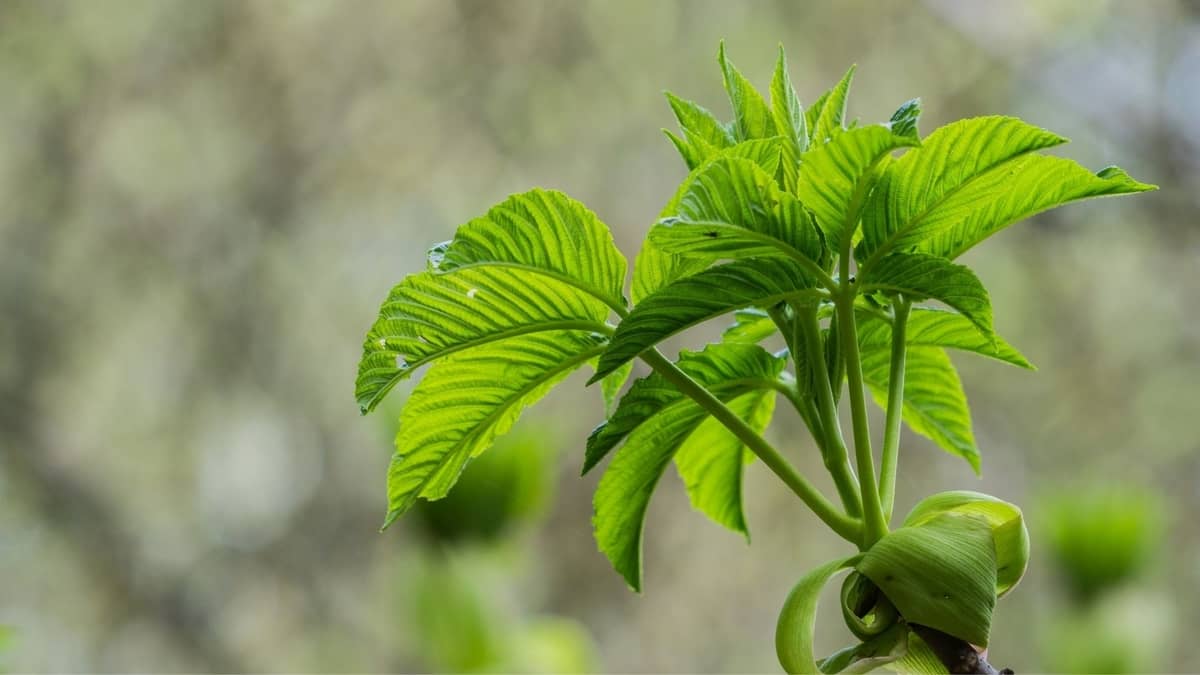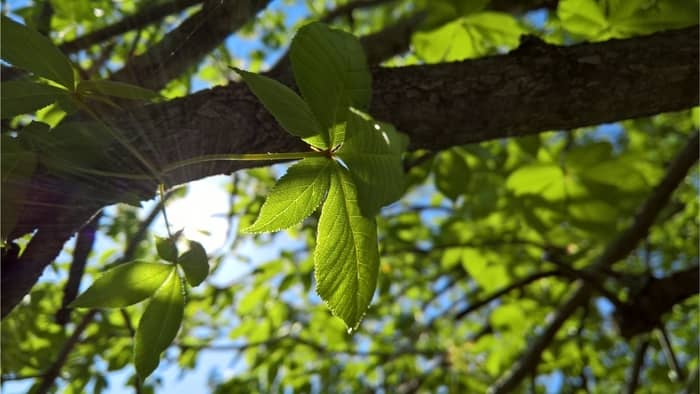Last Updated on October 7, 2022 by Griselda M.
When growing a buckeye tree, it is essential to know the answer to the question ‘how long does it take to grow a buckeye tree’, so that you can prepare for its growth journey.
The buckeye tree (Aesculus) is one of the oldest trees in North America. It has a wide range in many areas of the United States with different varieties occurring in different regions. It is generally found in the calcareous areas in natural habitats such as the banks of streams, mesic forests, and old fields.
Different Types Of Buckeye Trees
There are about six kinds of buckeye trees that are native to North America and can grow up to 60 feet tall. Because they can grow so tall, they do not make very good indoor or pot plants and should be planted in the ground as soon as they are about two to three years old. Smaller buckeye varieties may however be suitable for patios. It is therefore important that you do your research on the type of buckeye tree you decide to plant so that you can give it the ideal environment to thrive.
Some of the most common varieties of buckeye trees include the American buckeye (Aesculus glabra) and the California buckeye (Aesculus californica) and they grow best in US plant hardiness zones 7 to 8. They all produce seeds that can be used for propagating these trees.
How Long Does It Take To Grow a Buckeye Tree?
The flowering and fruiting of a typical buckeye tree may take up to ten years if the tree is planted in an ideal location. Growing any buckeye tree requires a lot of patience before you can enjoy the fruits of your labor. Here are some of the conditions you need to provide your buckeye tree with to ensure optimum growth:
-
Sun exposure
Buckeye trees need full sun exposure to grow well. So ensure that you plant your tree in a location where it will get at least four hours of sunlight per day, with minimal shade.
-
Soil type
The tree will do well in clay soils that are rich in organic matter. It will not do too well in a sandy type of soil.
-
Propagation
All types of buckeyes produce seeds that can be used for propagation. The seeds may require chilling before they can be germinated in rich, well draining soils. The seedlings can then be transplanted to a location where they will get a constant provision of water and nutrients.
-
Watering
Mature buckeye trees do not need as much water as younger ones that are still developing. While your buckeye tree is still growing, make sure you establish a good watering schedule to keep it strong and healthy. Water the tree as needed but make sure that the water drains through and does not get waterlogged because this may lead to unfavorable conditions such as root rot.
-
Fertilizer
Buckeye trees are very low maintenance trees and do not require fertilizer. Younger trees may however benefit from some fertilizer while they are still growing. You can provide your young buckeye with liquid fertilizer or a thick layer of organic compost to ensure that they grow strong and establish well.
When Do Buckeyes Bloom?
Buckeyes usually bloom in the springtime, but they can bloom anytime from March through May. The differences may also depend on the type of buckeye in question.
The bloom of the buckeyes is colored by the fact that they are composite flowers. The blooms are arranged in erect clusters called panicles that can range from four to eight inches in length.
Take Home Message- How Long Does It Take To Grow a Buckeye Tree?
Growing a buckeye tree is an exercise that will require a lot of patience on your part. Even though these trees are relatively low maintenance, you need to know what you are doing, set them up just right and they will practically take care of themselves.
Provide these plants with the right growing conditions such as the right soil type, watering schedules, fertilizer, sunlight exposure and know when to transplant them and you will have the happiest buckeye tree to enjoy and use for different purposes.
We hope this article provided you with all the information you need to grow your buckeye tree, and how long you can expect to wait before it reaches maturity.
If you enjoyed reading this article, please share it with your family and friends.
Read more about How To Make An Oak Tree Grow Faster?
Frequently Asked Questions
Can you grow a buckeye tree from a buckeye?
Yes, you can. All buckeye trees produce shiny trees that can be used to propagate these trees. To grow a buckeye tree, collect a handful of buckeye seeds and germinate them because some of them may nit be viable. Once they have germinated, transplant them to a location that has full sunglight exposure. Water and fertilize your buckeye seedling and over time it will develop into a full buckeye tree.
Are buckeye trees hard to grow?
It depends on where you live. Buckeye trees like well-drained soil and full sun. They do best in an area with a lot of moisture in the spring, such as near a lake or river. In fact, the seeds for Buckeye trees are found at the bottom of lakes and ponds! If you have a lot of rain, the leaves may turn yellow and fall off. If your soil is very dry, the tree won't have enough water to keep itself alive.
What time of year do buckeyes fall?
Buckeyes fall in the fall. That's when the new leaves come out and the flowers and fruits appear. The leaves and fruit are edible, but the seeds are usually discarded. The seeds can also be used to make jewelry.
How long does it take for a buckeye seed to sprout?
It can take about three to four weeks for buckeye seeds to sprout. The seeds are dormant until they get wet or warm, then they germinate and grow into a plant.
How big do Ohio buckeye trees get?
The Ohio buckeye (Aesculus glabra), can grow up to between 50 and 60 feet in height and 18 to 20 inches wide.
How do you grow buckeye seeds from a bottlebrush?
You can purchase buckeye seeds at your local nursery. Buckeye seeds are very easy to grow. You can start them in a small pot, and then transplant them into the ground. The soil needs to be well-drained. Buckeye seeds need good, deep soil. They also need a lot of water. They will germinate when they get wet or warm.

